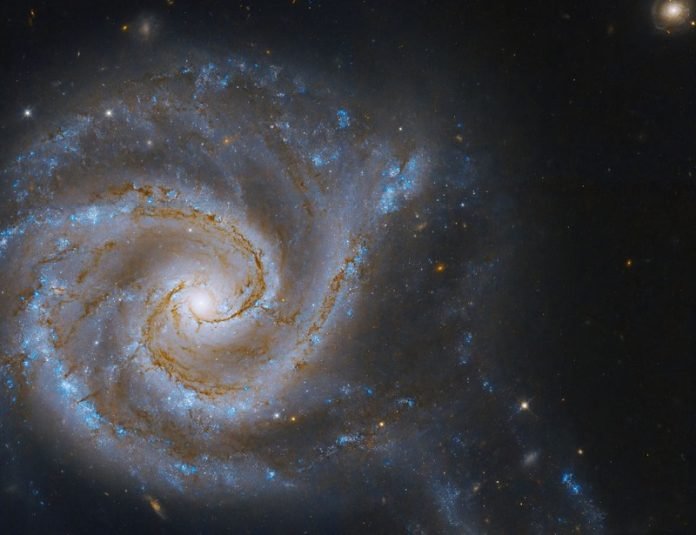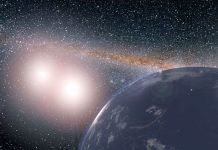
The poetic-minded among us like to point out how Nature is a dance. If they’re right, then galaxies sometimes form unwieldy pairs.
With the Hubble Space Telescope, we can spot some of these galactic pairs as they approach one another.
Part of galactic evolution involves galactic interactions and mergers. When galaxies interact gravitationally, it can create streams of gas and dust that stretch for light-years.
ARP 271 is one of the interacting pairs of galaxies imaged by Hubble. ARP 271 contains NGC 5427 and NGC 5426. The pair is about 130 million light-years distant and about 130 million light-years across.
The pair have been interacting since long before humanity ever appeared and will continue to interact for tens of millions of years. It’s not clear if the pair will eventually merge.
Powerful interactions between massive galaxies like these can trigger star birth in the streams of gas and stars that bridge the galaxies.
The bridge between the pair is faint in these images, but it’s there in the lower right corner of the Hubble image, and young bright blue stars highlight it. The bridge feeds gas back and forth between the galaxies, fuelling star formation.
However, the same interactions can sometimes quench star birth. High-velocity interactions can heat gas so much that it weakens star formation.
Most galaxies have interacted with others, even if they haven’t merged. There are likely few galaxies that have interacted with a neighbouring galaxy at one time or another. There may be no pristine galaxies.
Our own Milky Way galaxy is on course to interact with the neighbouring Andromeda galaxy in about 4.5 billion years.
Astronomers think that ARP 271 could serve as a blueprint for the eventual Milky Way/Andromeda interaction.
About 25% of galaxies are currently merging with others, according to the Harvard and Smithsonian Center for Astrophysics.
Even more of them are interacting gravitationally, if not merging. The Milky Way is interacting with the Large and Small Magellanic Clouds, two irregular dwarf galaxies orbiting the Milky Way. That interaction is also creating a stream of gas called the Magellanic Stream.
It took billions of years of mergers for small galaxies to combine and become the massive galaxies we see today.
Giant ellipticals are the largest galaxies in the Universe, and some are 700,000 light-years across. Astronomers are almost certain they only grew so massive through mergers.
Human lifetimes are inconsequentially short compared to the lives and affairs of galaxies. So is human civilization.
We can catch glimpses of galaxies interacting, and we can catch these interactions in different stages. But we’ll never see the final results.
The dance of galaxies started long before we were here and will continue long after we’re gone.
Written by Evan Gough/Universe Today.



